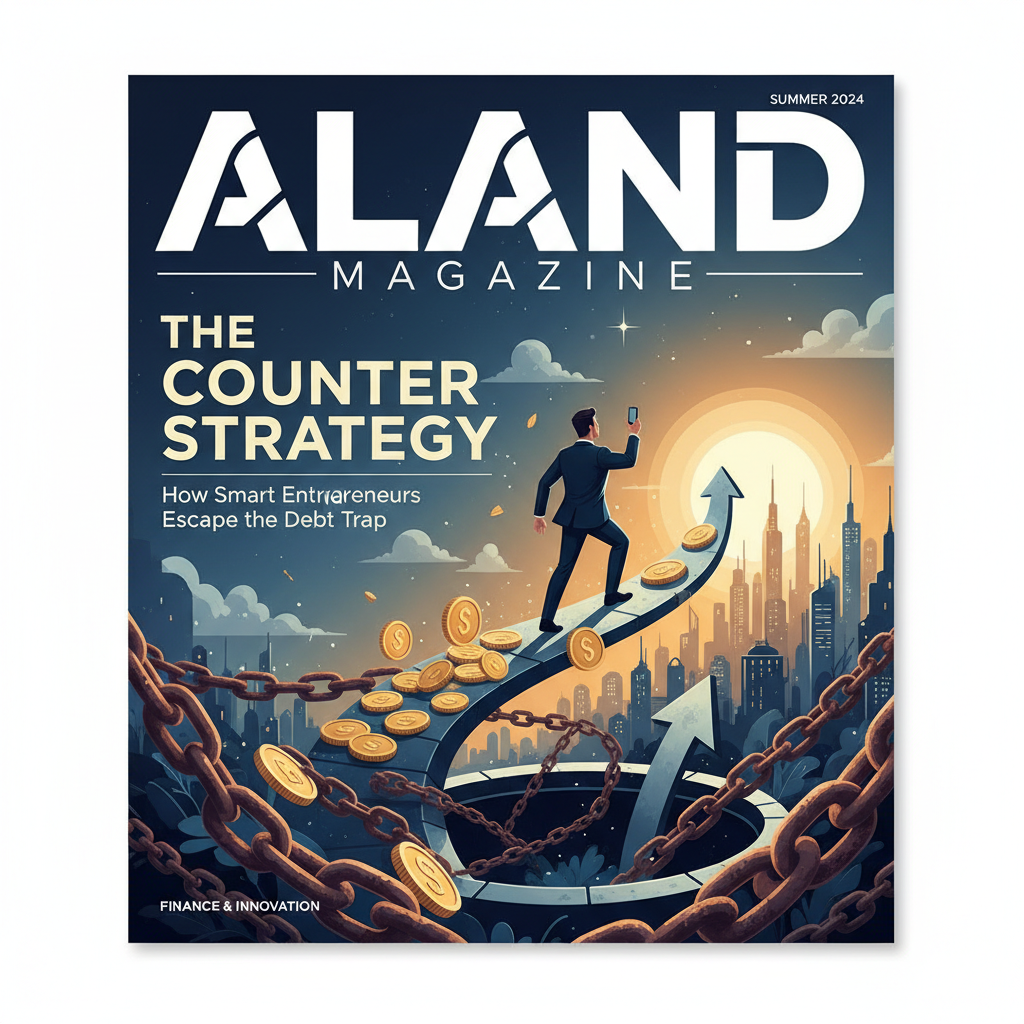The Counter Strategy: How Smart Entrepreneurs Escape the Debt Trap
- Published Date: 11th Oct, 2025
-
4.8★ ★ ★ ★ ★(126)

In the corporate world, debt is not just a financial condition; it is often a strategic trap. Many business owners spend years patching financial leaks, refinancing liabilities, or chasing short-term sales that barely cover interest payments. These reactive tactics create motion without progress. The Counter Strategy reframes the problem entirely by focusing on redesigning the business model so that cash flow becomes consistent, scalable, and self-sustaining.
Understanding the Debt Loop
Debt becomes dangerous when it funds inefficiency rather than opportunity. Companies fall into the trap of borrowing to survive instead of borrowing to expand. What follows is a cycle of payments, penalties, and pressure that consumes focus and limits creativity. The key insight of the Counter Strategy is that survival tactics drain attention from what truly builds stability: creating value that continuously returns.
The goal is not to eliminate debt overnight but to build mechanisms that make debt irrelevant through sustainable income and repeat engagement. This is where strategic simplicity becomes the difference between sinking and scaling.
The Five Steps of the Counter Strategy
Step One: Create an Offer Too Clear to Ignore
Every business lives or dies by its offer. In a debt-driven phase, most companies try to push multiple complex solutions, hoping something sticks. This approach dilutes both attention and resources. Smart entrepreneurs reverse-engineer their offer into one simple, irresistible proposition.
A compelling offer answers three questions immediately:
What do you sell?
Why does it matter?
What result does it deliver fast?
For corporate teams, this means aligning all departments around one clear value message. Simplifying your proposition does not mean shrinking ambition; it means amplifying clarity so prospects convert faster and marketing costs shrink.
Step Two: Build a Reason to Return
Revenue volatility is the true cost of poor customer retention. When clients buy once and disappear, every month feels like a restart. The Counter Strategy emphasizes retention mechanisms that create financial rhythm.
Consider how subscription models, service tiers, or contract renewals can generate predictable income. In B2B environments, this might mean offering annual service agreements, training programs, or performance-based consulting retainers. Consistency of revenue directly reduces dependency on loans or external capital.
When customers have a reason to return, debt transforms from a burden into a bridge, something you can manage strategically rather than fear emotionally.
Step Three: Make the Brand Talkable
Visibility is no longer about shouting louder; it is about being worth talking about. A business that people naturally discuss grows faster, attracts better clients, and converts without constant ad spending.
To implement this, integrate what marketers call a “talk trigger,” a unique element that makes your brand shareable. It could be your company’s bold refund policy, an exceptional onboarding experience, or a distinctive brand philosophy. When people enjoy sharing your story, you gain organic reach that compounds with time.
The smartest companies design their narrative as part of their product architecture. They build emotion into process, not just promotion.
Step Four: Systematize Cash Flow and Reduce Friction
Most debt problems originate from inconsistent cash cycles. Even profitable companies can crash if inflows and outflows are not synchronized. Smart entrepreneurs create systems that shorten payment cycles, automate billing, and eliminate redundant spending.
Practical moves include setting up automated invoices, incentivizing early payments, and building cash buffers through micro-subscriptions or advance retainers. Streamlined operations protect liquidity, allowing capital to serve growth rather than rescue missions.
A clean system of flow does not just stabilize finances; it enhances credibility with investors, lenders, and partners who value predictable performance over spontaneous success.
Step Five: Track Momentum, Not Just Effort
Many leaders confuse effort with progress. Endless work hours do not translate to financial improvement unless they accelerate velocity, the rate at which money circulates through your business.
Use metrics that measure return speed: average days to payment, client lifetime value, or the ratio of recurring to one-time revenue. These indicators reveal whether your company is building momentum or simply surviving through effort. Momentum, once achieved, compounds and becomes your shield against future debt.
The Strategic Mindset Behind the Counter
The Counter Strategy is more than a financial fix; it is a mindset shift from reactive to proactive, from patching to building. Entrepreneurs who master it understand that control over cash flow equals control over destiny. They design systems, offers, and relationships that keep capital moving in cycles they can predict and expand.
The smartest organizations do not wait for financial freedom; they engineer it through structure, simplicity, and repeatable value.

